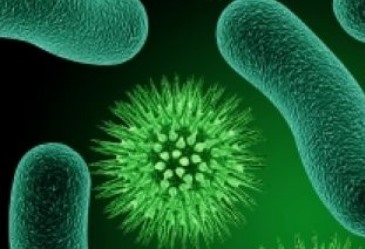Germ theory of disease is the theory that human infectious diseases are caused by specific variety of microorganisms including but not limited to bacteria, fungi, protozoa and viruses. This very important theory of microbiology was postulated by Louis Pasteur, a French microbiologist in 1857 when he tried to unmask the reason why beer and wine would go sour, and the cause of disease in silkworms (larvae or caterpillar of silkmoth, an economically important insect that produces silk).
However, the theory of the causative agents of infectious diseases in man and animals (i.e. the germ theory of disease) has been widely postulated prior to the actual establishment by Louis Pasteur in the 1850’s that microbes were responsible for causing infectious diseases in man. Girolamo Fracastoro (1483-1553) – who postulated that certain diseases are caused by some invisible organisms; Ignaz Semmelweis (1818-1865) – who pioneered the use of antimicrobial agents (antiseptics) in labour wards or obstetrical practice to contain microbial contamination and spread in hospital wards; Robert Koch (1843-1910) – who developed the famous Koch’s postulates of disease that linked a particular disease to a specific pathogenic microorganism; and Joseph Lister (1827-1912) – whodiscovered and established the process and importance of antisepsis in medical practice, were some notable microbiologists whose independent research gave impetus to the authenticity of the germ theory of disease.
It is noteworthy to point that prior to Pasteur’s discovery of the germ theory of disease, there was various independent works that tried to establish the link between a disease and a microbe. Of particular interest was Agostino Bassi de Lodi – who showed that some silkworm disease was caused by a fungus; and Berkeley M.J – who showed that the Great Potato Blight disease of Ireland and silkworm disease was caused by a fungus. However, Louis Pasteur was the first to establish the link between a disease and a microbe (even though his findings were based on animal diseases).
Pasteur proposed that “a growing living organism was responsible for the spoilage”; thus the name germ actually originated from germination- which indicates that the growth of the microbe in the food (wine and beer) was responsible for the spoilage. This serendipitous discovery by Louis Pasteur- which elaborated the relationship between microorganisms and diseases paved way for the golden era of microbiology which blossomed as a field of the biological sciences.
Louis Pasteur showed in his series of experiments that microbes were responsible for causing the spoilage of wine and beer, and that a microorganism was responsible for causing the silkworm disease but he never established the actual link between microorganisms and human diseases. Prior to the discovery of microorganisms as the main causative agents of infectious diseases, man attributed human illnesses to several non-microbial origin or causes such as bad air or evil spirits. They even know that there was a link between disease and dirt but could not fathom the actual relationship or cause responsible for it.
The germ theory of disease linked microorganisms to particular diseases, and this idea of microbiology has continued to impact medicine and the way in which infectious diseases are treated or managed till date. Germ theory of disease gives the underlying principles of infection, their causative agents, spread or transmission and the likely ways of containing their untoward effects in a defined human population. Louis Pasteur’s discovery of germs or microorganisms as the causative agents of diseases was further expounded by the works of Robert Koch who developed what is today known as the Koch’s postulate of disease.
Robert Koch’s scientific breakthrough came through when he identified the causative agent of anthrax (Bacillus anthracis) in 1875. Koch’s experiment on anthrax, an important disease in cattle as at the time led him to discover the causative agents of tuberculosis and cholera which were both important human diseases. This serendipitous discovery of the causative agents of anthrax, cholera and tuberculosis by Robert Koch gave impetus to the germ theory of disease – which linked microorganisms to particular diseases. Robert Koch was the first to establish the link between a human disease and a microorganism.
References
Barrett J.T (1998). Microbiology and Immunology Concepts. Philadelphia, PA: Lippincott-Raven Publishers. USA.
Beck R.W (2000). A chronology of microbiology in historical context. Washington, D.C.: ASM Press.
Brooks G.F., Butel J.S and Morse S.A (2004). Medical Microbiology, 23rd edition. McGraw Hill Publishers. USA. Pp. 248-260.
Slonczewski J.L, Foster J.W and Gillen K.M (2011). Microbiology: An Evolving Science. Second edition. W.W. Norton and Company, Inc, New York, USA.
Summers W.C (2000). History of microbiology. In Encyclopedia of microbiology, vol. 2, J. Lederberg, editor, 677–97. San Diego: Academic Press.
Talaro, Kathleen P (2005). Foundations in Microbiology. 5th edition. McGraw-Hill Companies Inc., New York, USA.
Wainwright M (2003). An Alternative View of the Early History of Microbiology. Advances in applied microbiology. Advances in Applied Microbiology, 52:333–355.
Willey J.M, Sherwood L.M and Woolverton C.J (2008). Harley and Klein’s Microbiology. 7th ed. McGraw-Hill Higher Education, USA.
Discover more from #1 Microbiology Resource Hub
Subscribe to get the latest posts to your email.



